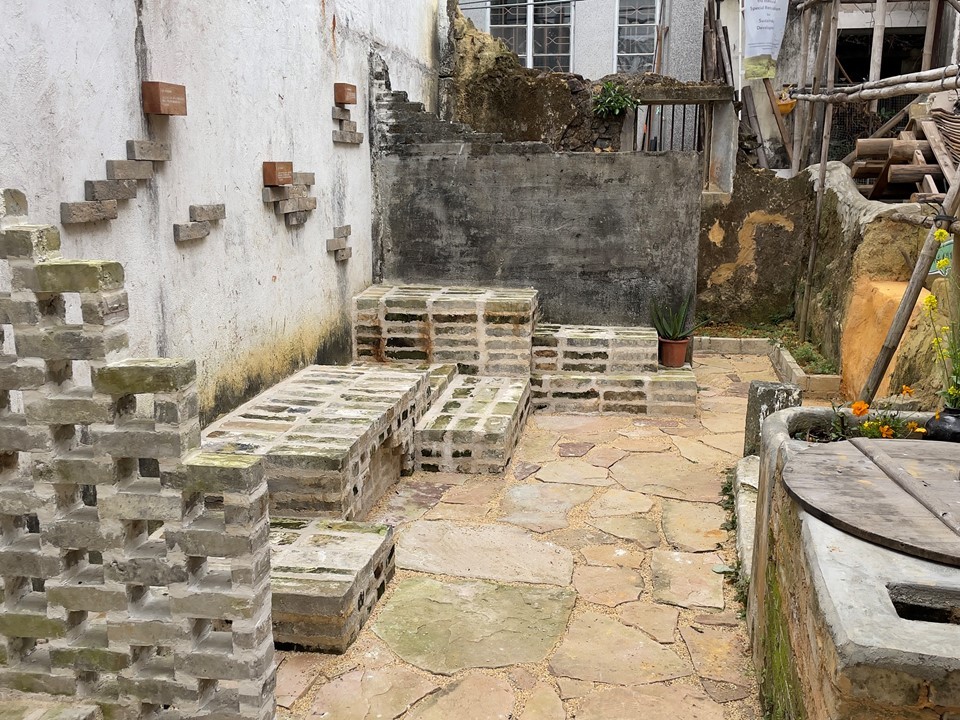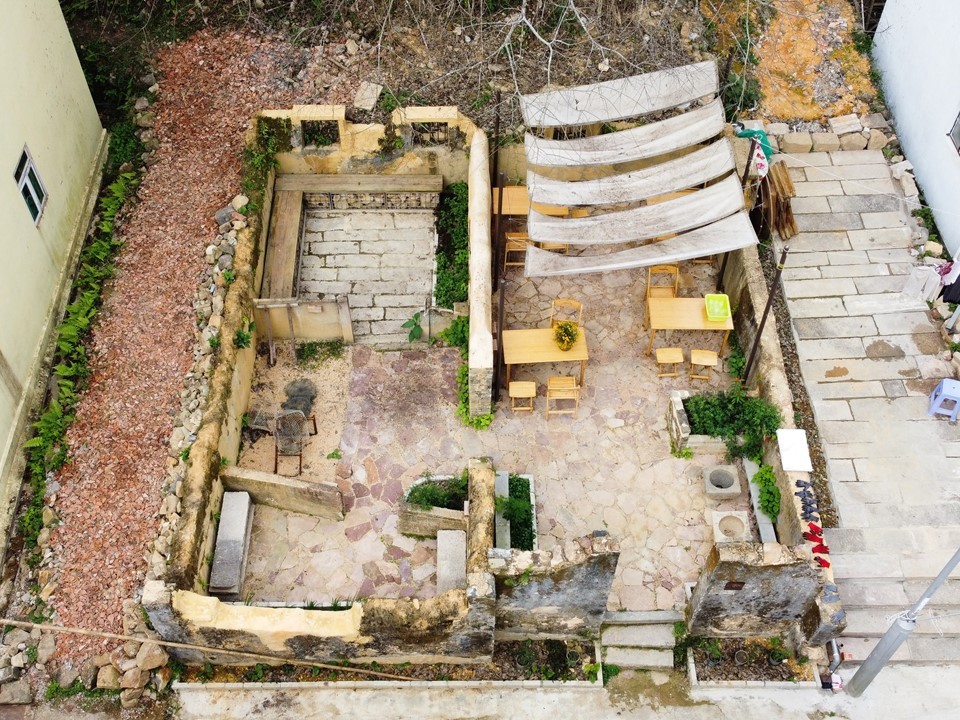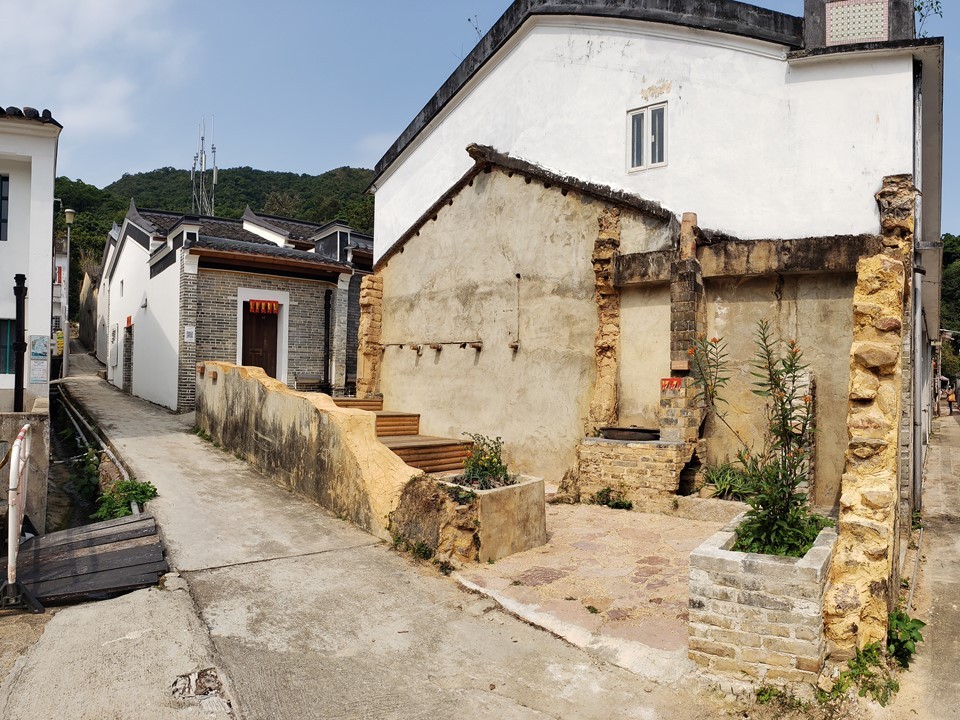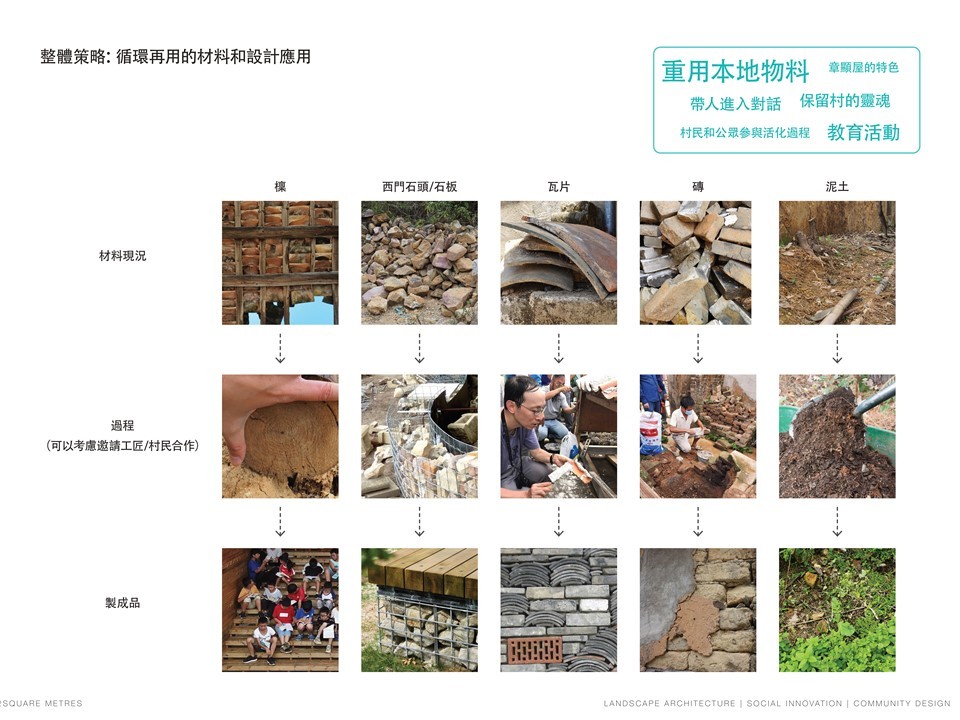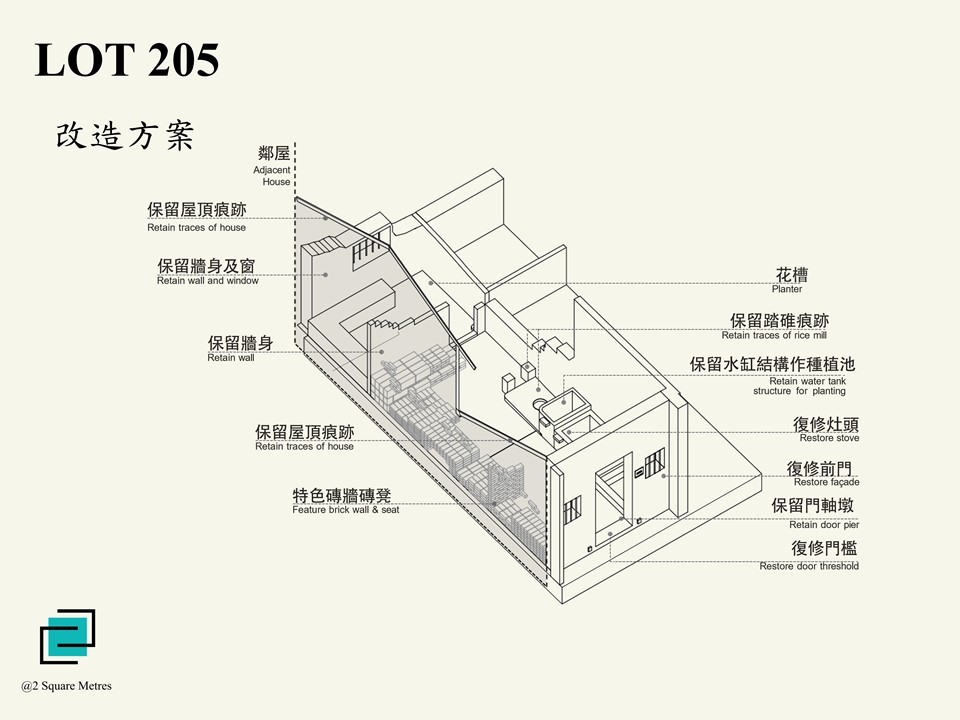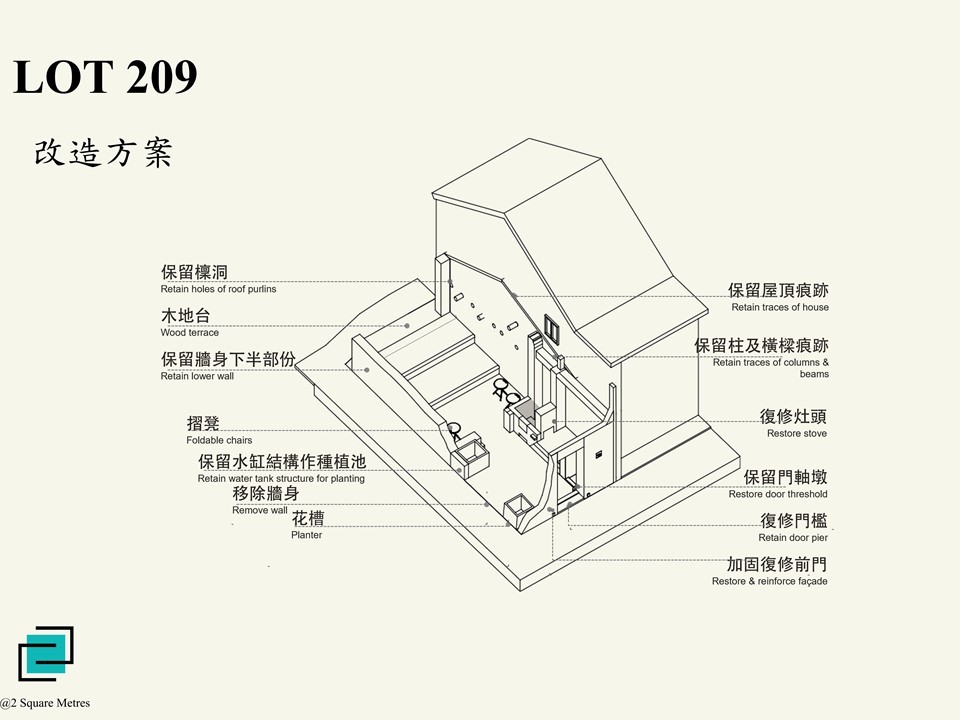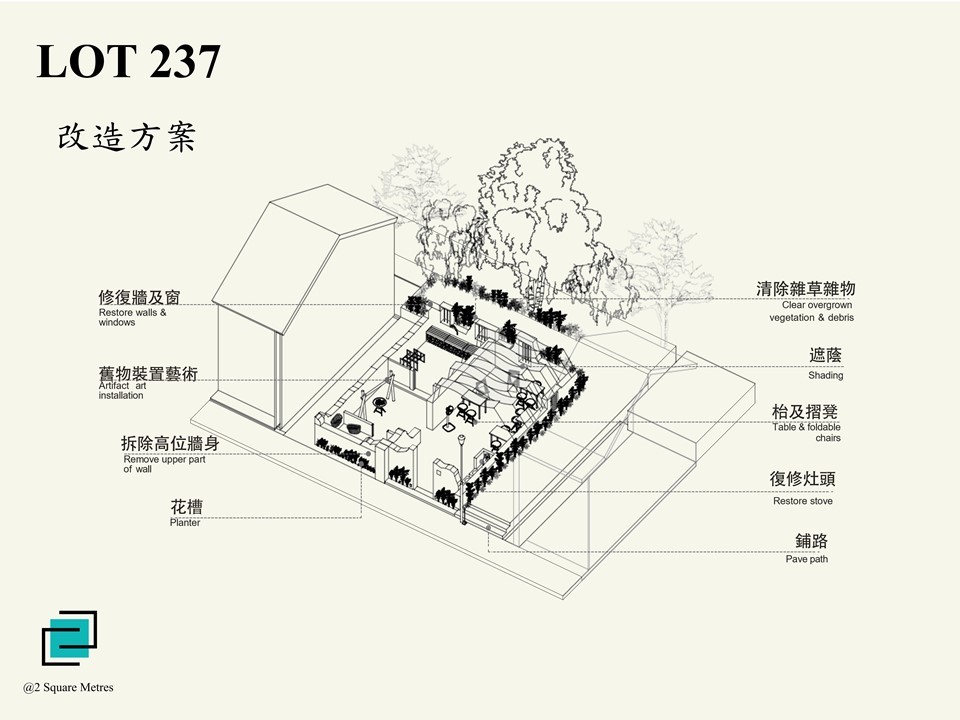Village Gardens Design Features and Materials
The three village gardens, created through the restoration and revitalisation of old village houses, are named "Cho", "Fong" and "Tong" each with unique design features:
"Cho" focuses on preserving the memory and characteristics of the old house, aiming to restore the essence of Hakka architecture. The garden was originally a half-collapsed Hakka old house. The design team dismantled the undamaged cedar beams from the roof, placed them on the ground, and after screening, polishing, and pest control treatment, built a terrace to retain the traces of the old house. The project also preserved other elements and daily items of Hakka architecture, such as rammed earth walls, stoves and water tanks, recreating the scenes of daily life in the past. The name "Cho" comes from the specially preserved stove, which was restored based on villagers' suggestions to make it usable, hoping this space can become a community activity venue.
"Fong" emphasises the combination of new and old, with bricks as the main feature, cleverly integrating both elements. The layout and arrangement of the brick wall at the entrance are unconventional, appearing in a staggered manner inside the house. To match the rural environment, the brick wall also mixes old bricks collected from collapsed houses and new green bricks, reflecting the design concept of combining new and old. Inside, more relics and stories of the old house are preserved, such as the stove, water tank and stone base of the rice pounder, presenting traces of Hakka rural life. The walls also feature many oral stories from villagers, detailing the past and daily life stories of the building.
Finally, "Tong" focuses on using local materials and retaining the original building layout and structure, reshaping the living scenes of Lai Chi Wo village. During the site cleaning process, the design team discovered many nostalgic items, such as stone mills, fishing nets and iron window frames, which were cleverly integrated into the garden design, becoming "installation art" showcasing Hakka culture. The team also used large granite pieces excavated on-site to pave a "room", with the remaining stones turned into stone benches. The innermost stone cage bench was made from the large stone base of the west gate of Lai Chi Wo village, and the small path beside the garden was paved with broken old tiles collected on-site.
Although the design focuses of the three gardens differ, they all fully demonstrate respect and appreciation on local culture and environment.
 Home
Home






